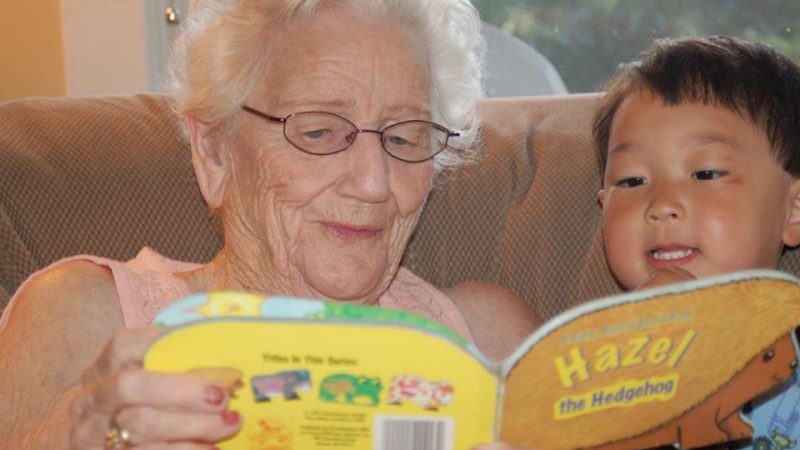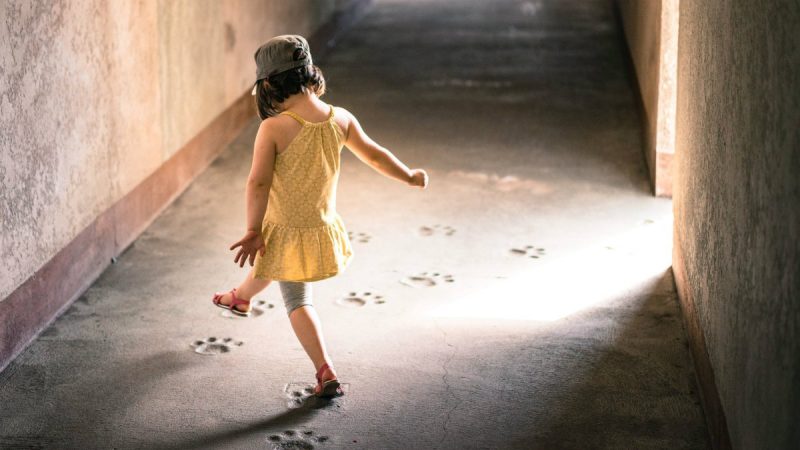
Asking children about gender stereotypes in books: online meeting with LTBT-PSG
If you wanted to find out what your child thought about jobs / roles and who they were for (woman/man) – how would you find out?
This is the question our Let Toys Be Toys – PSG group have been asking ourselves. We explored our ideas in an online chat this week:
Ask a straight question: Do you think a girl or boy could be a bus driver?
PSG G: We’ve looked at a measure where there was a list of jobs and activities and the participants had to tick who should do the job/activity with the answers being Girl, Boy or Both
It’d probably work well with the age group if we interspersed the questions with other types – doing more than 2-3 in one go is likely to just mean the child ticks the same box all the way down because they’ve got bored
PSG E: I guess there’s also an argument that they learn what the “right” answer is after a while (as it’s our kids and they’re experts in looking for our approval!) and just replicate that.
PSG G: Yup, a mix of types of questions along with repeated questions said in a different way can help reduce the bias
PSG B: I think this is the challenging question for the lower age limit – I often ask my 3 year old how he knows if someone (usually an animal) is a boy or a girl when he gives them a gender and he always struggles to answer
PSG D: I asked my 2.5 year old if her toy was a boy or a girl (just to see what she said). She looked at me as if i were mad and said ‘it’s a rabbit!’
I guess that is why she is too young for the study!
PSG B: He knows boys and girls are different but I don’t know if he knows why or how conceptually enough to answer the question
PSG E: If we’re measuring their bias, do we need to know why?
Could it be enough to simply find out which ones he thinks are for boys / girls?
PSG B: Perhaps not, but I’m not sure whether it means he would struggle to answer the question
PSG J: One problem is, if you don’t phrase the question very carefully you are immediately implying that jobs can be identified as being more suited to one gender than others …
PSG E: is there a way round this?
PSG B: Then it needs to be more conceptual – like who can do this job more like the existing measures
PSG J: I’m really struggling to find a cunning way round it. Maybe a picture of someone of indeterminate sex doing a job, and the child is asked if it is a boy or a girl?
Get the child to draw the person doing the job, give them a name, describe them.
Or tell a story about someone with that job – some kind of imaginative task?
PSG B: There was a set of measures we looked at which had images of people but I like the idea of getting them to draw and describe them
PSG I: That requires a child that has an interest in drawing though. My child wouldn’t do that. ?
PSG H: Would your child make up a backstory about a character?
PSG I: Possibly. He just doesn’t do drawing/mark making. He’s not really a sit still child!
PSG D: Is 3D any better – egg and cereal box gluing or laying lots of toys out on the floor to make a ‘thing’ for example? I doubt it matters what the creative thing is – more that it makes them think and talk.
PSG H: Another idea could be choosing a face to go with the job, eg face to go under an astronaut’s helmet or fire fighter mask, stick the mask on a surgeon, hat on the cook.
But I guess you’d have to have a selection of faces for each job
PSG I: They’re both really good suggestions. Honestly I don’t know what he would do as I haven’t tried either of those options, I just know that he never joins in with drawing activities.
PSG L: Just basics but could we ask them who they think the story is about and what happens to them. And ask them if they think something like that could happen to them. And if so why and if not why not and what would it take for it to happen to them.
For toddlers I would say ‘could (female role model/family member) be a police officer?’ And then ask if male counterpart could do same job
PSG B: I think if you phrase the question like that then they’re likely to be biased
PSG F: I meant a ask the same question but with male person instead of female. Ask with different jobs and in different orders
Show them a toy figure of someone doing the job or engage in role play and see if they refer to gender
PSG K: I assume by toy figure you mean drawing or picture? Otherwise how would people receive it? Unless they use their own toys – which would need to be gendered??
Show them a photo of a man and woman doing the same job and ask who they think is better at it
Find pictures of non gendered animals doing the job and ask them to give the animal a name
PSG D: I really like the ‘give the animal a name’ one, although adults default to male with names when gender is unknown. Do you think kids do the same?
PSG E: I love the name the animal one too.
Would we give them a selection of names (perhaps name tags) to choose from?
PSG D: Name tags might help.
Could you ask the kids to do a card sorting exercise?
PSG D: Maybe using some of the pictures from all 3 books and some other ones, which are not in any of them.
PSG B: This seems like an idea worth exploring
PSG G: I like this as an idea. You could do lots of photos of animals (as they tend to be easier to make genderless) in uniforms/doing jobs and ask the children to sort them into girl, boy, both?
PSG E: we could include the job roles from the books.
PSG B: Sorting them into boy and girl or not sure would is good – we’d have to make sure the outfits were gender neutral and the animals
PSG G: Yes ☺️ but not the characters who do those roles from the books as it’ll skew the results – if X does Y in the book then it’s likely that the children will put X doing Y in the test, because they are X not because they’re a girl or boy.
PSG B: Certain animals are gendered aren’t they?
PSG B: Ha, good point!
PSG E: Yes, sadly generally, predator = male, prey = female, in gender stereotypes 🙁
Mostly – not 100% reliably!!
Predator: shark, tiger, dinosaur = boy
Prey: rabbit, squirrel, unicorn = girl…See More
But then some things are for everybody – hedgehogs for example!!
And ladybirds are seen as for girls but they’re vicious cannibals.
PSG G: Unicorns aren’t prey, they’re vicious! ? On saying that, rabbits are prey yet a lot of kids will think of Peter Rabbit
PSG G: Could use a multiple photos of the same animal doing different jobs.It’d help remove bias
PSG B: Maybe they could sort some pictures from the book they haven’t seen? (Not exclusively, just as part of the test?)
I’m not sure – I haven’t seen the books so maybe all the images are clearly gendered?
Or playing devil’s advocate, do we want some obviously gendered ones in there too, just to check they are paying attention?
PSG G: I don’t know, I’ve only read the Book with No Pictures. Some pictures from the other book could be good but if they’re popular books the children may already associate it with what happens in the book. A neutral character may be better to reduce bias
PSG I: I really like this idea. And actually if the characters from the books are included and they have gender in the books that might add a bit of an internal control, to see whether the child allocates them based on the “knowledge” gained from reading the book?
PSG B: Could you get them to talk about the animal and see if they use a gender pronoun as well
What about something using figures they can hold in their hands?
e.g I quite liked the measure we looked at like this, but I wasn’t keen on the wording.
It used pictures & descriptions of workplaces and the child is asked who should work there.
What if we showed them the pictures and had stereotypically female & male characters and we simply asked them who should work there, so they can place them on the picture without us ever actually mentioning men and women.
PSG B: On a similar theme – what about using cardboard dress ups where you attach the clothes?
PSG J: I think this is probably closest we may get to not implying there are gender differences in job roles. Will children at the younger end be able to interpret the pictures well enough?
Am I right in thinking we’re particularly interested in measures where children can actually hold something / play with or use their imagination
PSG E: rather than answering questions off a sheet?
PSG B: I think that would certainly fit better for the lower age range
PSG C: Seems so but I’m basing this on the younger end of the scale. It may level out the ages though and provide something we can compare more easily
PSG H: I do think using faces or figures could make more sense. Especially if they are thinking of adults instead of children?
PSG H: Or if they should be thinking of girls and boys child figures or faces could work
PSG J: I teach adults and card sorts are much more popular than box ticking. And it doesn’t turn into an accidental reading test!
PSG E: I’m thinking this kind of thing will work fine for the older ages also. It’s accessible rather than babyish – isn’t it?
PSG D: I think we might get more honest answers too. Even young kids know that tests have correct answers!
PSG I: I think it removes differences in ability to express things with language. Especially at the lower end of the age range that could be an issue. Children can have internalised the concepts but not have the words to express it.
What would we want to ask the parents?
PSG I: I think we should ask the parents if they make a conscious effort to avoid gender bias in their reading. Eg I know I “should” try to do an even split, but I have realised that when reading to my son, I always refer to general characters as “he” ?.
PSG B: I sometimes swap half way through when I remember ?
Other thoughts
PSG C: Try to find out their bias and whether that can change with books.
- Jobs: has the concept of jobs even been on their radar? Is it affected by whether parents work in those jobs?
- Toys: have they even noticed images in books of children playing with toys, I assume it’s friend influenced so can we control for children that go to nursery or school and see that?
PSG B: It would be good to know what jobs kids think people can do and whether they think there are boy jobs and girl jobs and if that changes
PSG C: I would like to avoid children repeating back things we’ve taught them ‘boys and girls can do either’ when that isn’t really how they think
PSG H: I wonder if interstellar cinderella might make some children disagree with it (strengthening pre existing ideas), or specifically increase acceptance of females in similar roles (?mechanic) but not all generically male roles (eg being strong or being brave)? I need to look at the books again though.
PSG E: Interesting!
Control Book
PSG B: I don’t think the book with no pictures will influence their gender views at all. We have it and I’m not sure it has any bearing on his views but that’s the point isn’t it?
PSG E: We’d hope it doesn’t as it’s the control 🙂
If it does, it’ll be a very interesting result!!
PSG K: I’ve been thinking about the book with no pictures and it is quite naughty or a bit subversive in some ways. It tries to put across that it is getting the reader to say things they don’t want to say – rule breaking in a way. This might be why my kids like it so much. They’re not that keen on rule breaking generally. We could have a question about breaking rules, yelling, getting people to say things they don’t want to say to see if the book affected that in any way. To some extent gender stereotypes could be seen as rules and going against that breaking rules. I wonder if that rule breaking would transfer in anyway? Probably way over thought this! Anyhow thought I’d mention.
PSG E: Interesting point!
Exclusion?
PSG F: Would it need to be acknowledged if the children had read the book before this experiment?
PSG E: It could make a difference, couldn’t it. I guess if they already read it every night, reading it more is hardly going to make a difference is it?! Would we want to exclude them if so? Or if they read it a lot?
PSG B: They’re quite popular books, it would be a shame to lose numbers because of it. But I imagine we’d have to at least record it
Age groups
PSG F: What’s our age group?
PSG E: Our age group is 3-7.
PSG F: Are they going to be exactly the same questions for everyone or are we making them age appropriate
PSG E: We need to ask everyone the same questions.

